
Episodes
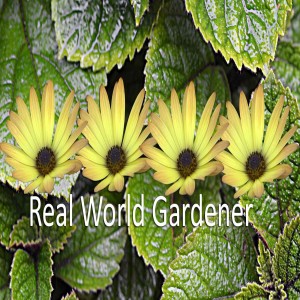
Saturday Dec 18, 2021
Festive Drinks with Pineapple Sage in the Kitchen Garden
Saturday Dec 18, 2021
Saturday Dec 18, 2021
KITCHEN GARDEN
Festive Drinks with Pineapple Sage
I talk with Corinne Mossati about this wonderful culinary sage that is so useful in festive drinks.
You may be growing some lovely salvias in your garden but not realise that one of them in particular, can make a luscious and revitalising drink, just right for the festive season.
Pineapple sage (Salvia elegans) is in the Lamiaceae or mint family.
Found growing naturally in forests quite high up but does well along the east coast of Australia.
A fast growing small shrub to 1.5m, that suits most regions of Australia with large leaves that are, distinctly veined and a bright lime-green in colour.
\ |
| Salvia elegans-pineapple sage |
Grow it in reasonably rich soil that has a good water holding capacity to keep it moving along during the warmest months of the year. Best in full sun.
Tip prune whenever you pass to keep your pineapple sage more compact and lush.
Flowers occur mainly in winter but will spot flower most of the year.
Let’s find out.
PLAY: Festive drinks with pineapple sage_8th December 202
That was Corinne Mossati founder and editor of the gourmantic garden and cocktails and bars websites.
Not only the leaves, but the flowers can be used to make drinks or flavour honey.
For a small 200ml jar, fill it up with pineapple sage flowers and then pour in the honey. Leave it to steep for one month and give it a give it a little stir every so often.
You can also use the flowers as garnish in salad, and because they have a pineapple flavour, they’ll make a fantastic addition to fruit salads, and sorbets.
Corinne's Tip:When you are working with aromatic plants, place the leaf on your palm, give it a little slap to release the volatile oils, before you garnish your cocktail, then inhale the aroma as you sip your drink.
 |
| Corinne's Pineapple Sage Cocktail |
Here are the links to the recipes Corinne mentions in the podcast:
The Sage Cuban: Pineapple Sage Cocktail: //www.cocktailsandbars.com/the-sage-cuban-pineapple-sage-cocktail/
Pineapple Sage Flower Honey: //www.thegourmanticgarden.com/pineapple-sage-flower-honey/
Simple Syrup: //www.cocktailsandbars.com/how-to-make-simple-syrup/
If you have any feedback why not write in or email www.realworldgardener.com

Saturday Nov 06, 2021
Old Man Saltbush in Plant of the Week
Saturday Nov 06, 2021
Saturday Nov 06, 2021
PLANT OF THE WEEK Number 2
Scientific Name: Atriplex nummularia
- The leaves impart a salty flavour if your dry and crumble them and sprinkle on food.
Possibly, listeners would be familiar with the term ‘old man saltbush’ or even have seen this plant growing somewhere.
But I daresay, you would not have heards that parts of this plant are considered bush tucker.
There are many bush tucker plants that are not that well known and this is another one of them.
- The Department of Primary Industries NSW recommends the following for farmland.
"Shrubs are grown in hedgerows as block or alley plantings across the farm to provide high-protein green feed during periods of feed shortage."
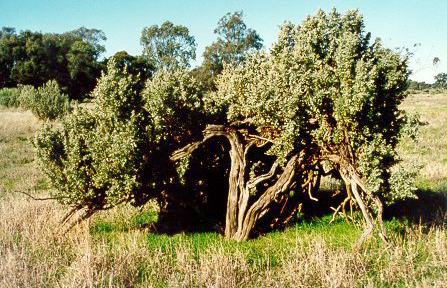 |
| Old Man Saltbush: Photo courtesy DPI NSW |
"Shrubs are grown in hedgerows as block or alley plantings across the farm to provide high-protein green feed during periods of feed shortage.Not recommended for areas with less than 300 mm average annual rainfall, or more than 600 mm average annual rainfall."
In the home garden, if you’re first planting out old man saltbush, don’t expect it to survive without any water at the start. After the first warm season, then it’s good to go on just what falls out of the sky in rainfall.
Let’s find out more by listening to the podcast with Adrian O' Malley horticulturist and native plant expert.

Thursday Nov 04, 2021
Australian Native Raspberry in Plant of the Week
Thursday Nov 04, 2021
Thursday Nov 04, 2021
PLANT OF THE WEEK
Scientific Name: Rubus parvifolia
| Rubus parvifolia |
Not all fruiting vines or canes come from the northern hemisphere, Australia has quite a lot of its own.
These plants have similar fruits and are easier to grow than there northern counterparts so why are we growing them more?
My experience is observing one such plant in Sydney Botanic gardens, scrambling on a stream bank near the Palm House. This plant is part of the native garden along with banksias, grass trees, lomandras, carpobrotus and many others, including a peppermint gum.
The habit of rubus species is to keep suckering and spreading, much like the non-native blackberry bushes, so take care where exactly you plant it in your garden.
Listen to the podcast to find out more.
I'm talking with horticulturist and native plant afficionado, Adrian O’Malley
PLAY : Rubus parvifolius_25th August 2021

Monday Aug 30, 2021
Woolly Tea Tree in Plant of the Week
Monday Aug 30, 2021
Monday Aug 30, 2021
Scientific name: Leptospermum lanigerum
lanigerum, is named using the Latin word for wool-bearing, describing the silky hairy leaves and hairy buds, shoots and young capsules.
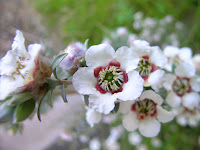
- Not all tea trees have green leaves, and this one has pewter grey or silver tiny leaves with typical 5 petalled tea tree flowers.
- May be limbed into a small tree. Light summer water though very drought adapted. Excellent background shrub or screen or large informal hedge.

Monday Aug 30, 2021
Aussie Coastal Rosemary is Plant of the Week
Monday Aug 30, 2021
Monday Aug 30, 2021
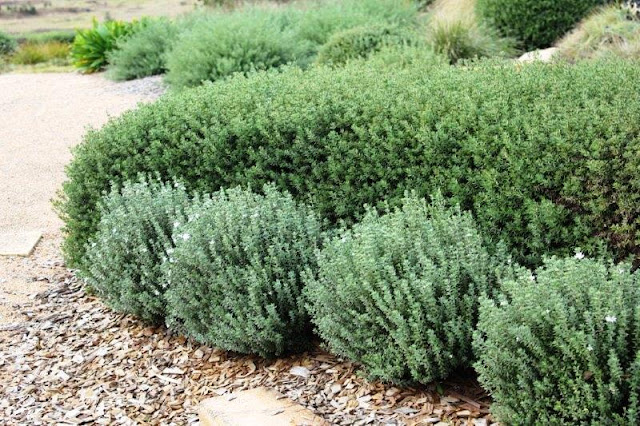 |
| Westringia 'Grey Box' |

Monday Aug 30, 2021
Aussie Salt Bush is Plant of the Week
Monday Aug 30, 2021
Monday Aug 30, 2021
pt 2 Silver leafed plants
Scientific name:Rhagodia spinescens
Common Name: Aussie flat bush; spiny saltbush
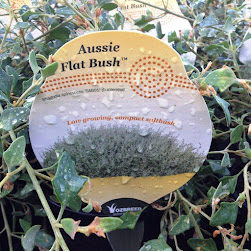
Ozbreed has a compact form makes a great ground cover and performs better if it is pruned annually or more often if a manicured look is desired. 30-50cm x 1m wide
